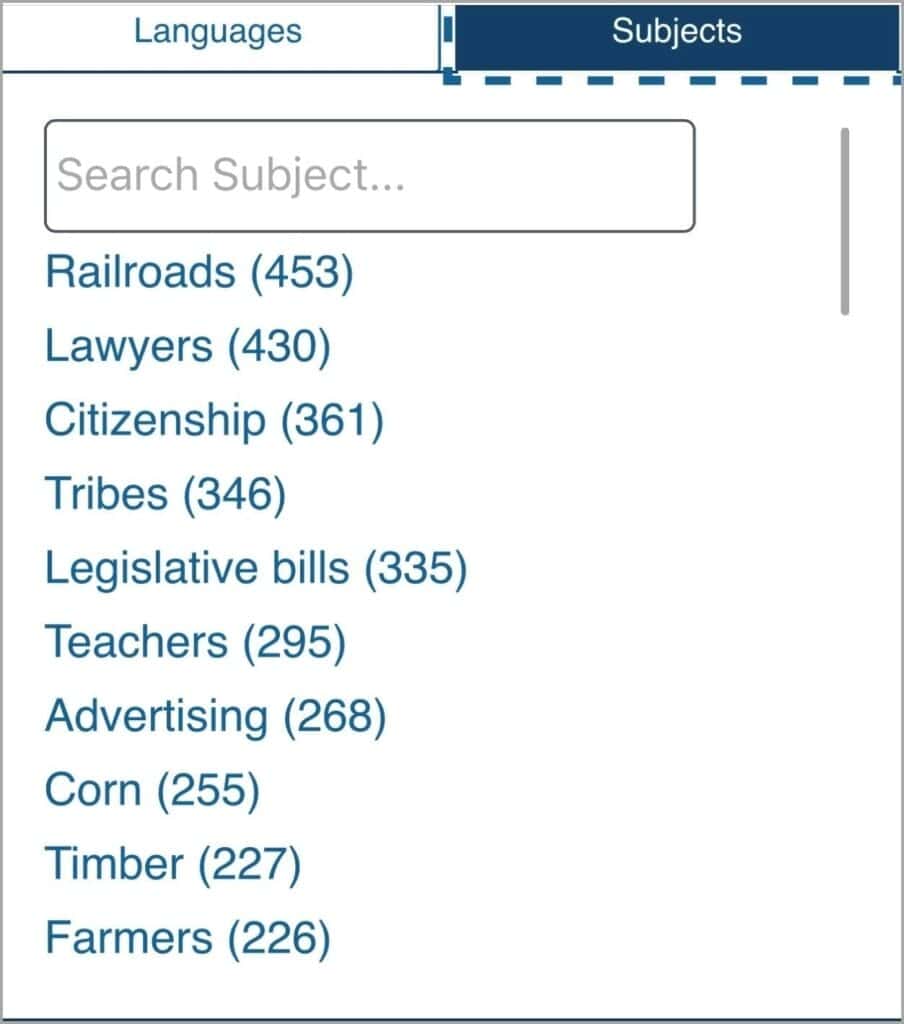│By Amelia Jean-Marie Meade, Gale Ambassador at the University College London│
Journalism, like many other fields of work, is broadly based around the investigation of a conflict or event, its documentation, and its analysis. It can take several forms including video, radio, and written. But what distinguishes journalistic writing from other writing styles is that it is specifically intended for public reception and consumption. Therefore, the term journalism is often associated with large-scale news and popular media outlets like national newspapers and broadcasting channels. Whilst this narrative is somewhat reflective of the field, it is also slightly misleading. This is because it does not properly account for non-traditional forms of journalism or the historically marginalised groups who make and have made interesting journalistic contributions. This blogpost will illuminate some examples using the Gale Historical Newspapers collection with the intention of challenging stereotypical notions of what journalism is and who can do journalism.
Representation: Journalism as a Teen Pastime
Gale’s Amateur Newspapers from the American Antiquarian Society database was a great starting point for my research. It contains thousands of journalistic pieces written mainly by young men and teenage boys from the United States during the nineteenth century. That most of these writers were so young both highlights the diverse age range of journalists and perhaps reveals something interesting about the extent of youth engagement with politics and social issues even before the concept of ‘the teenager’ had been firmly established in American society.
Many of these amateur publications weren’t necessarily intended for mass consumption. This somewhat sets them apart from other contemporary papers, which can be explored in the The Economist Historical Archive and The Times Digital Archive. According to the American Antiquarian Society website, these papers and periodicals were largely used as forums for the discussion of current affairs with the like-minded peers who would’ve constituted their main readership. After filtering my results by ‘Publication Section’, it became clear that opinion and news were major topics with over 80,000 sources available to explore.
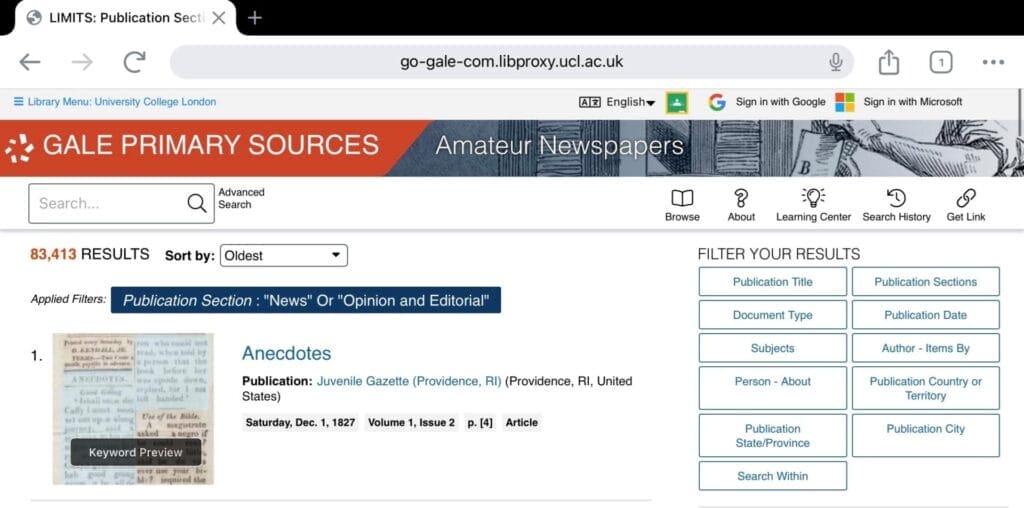
Youth on Voting
This article by author Daniel J. McCarthy tackles the issue of female suffrage.
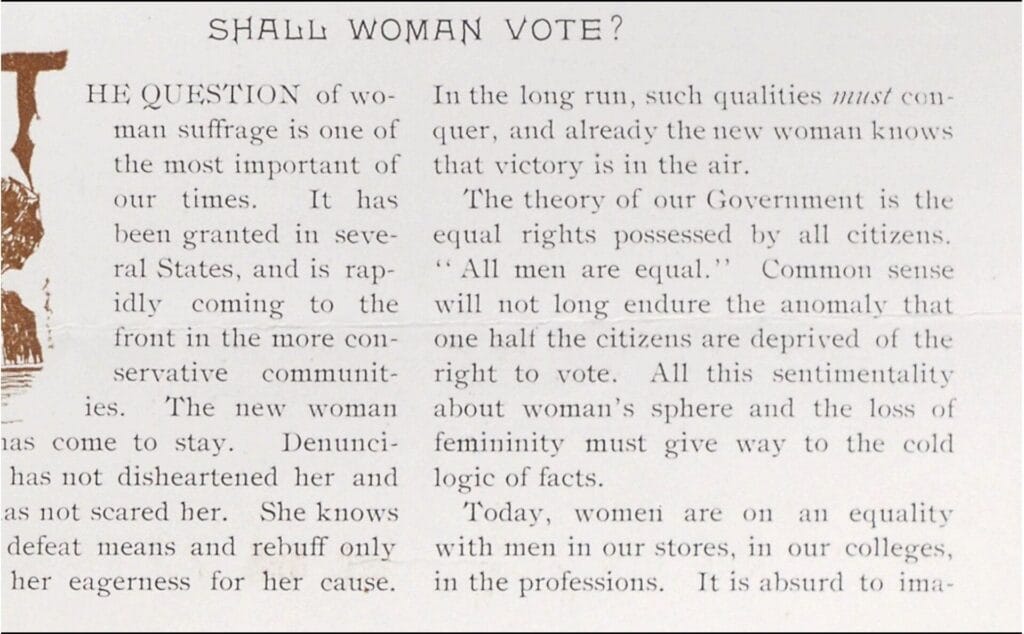
In spite of his gender, he takes a positive view on female enfranchisement, repeatedly emphasising the need for equality between the genders in order for society to move forward. What is interesting about his stance on the issue is that it goes against the grain of what we as modern readers may have expected him to believe. Perhaps, this was due to a similar sense of political exclusion, as age restrictions likely barred him from any meaningful sense of political involvement. It is worth noting that the theme of youth enfranchisement and suffrage is one that also appears quite frequently in this archive. For instance, this column from the North Carolina Amateur, which advocates for lowering the voting age.
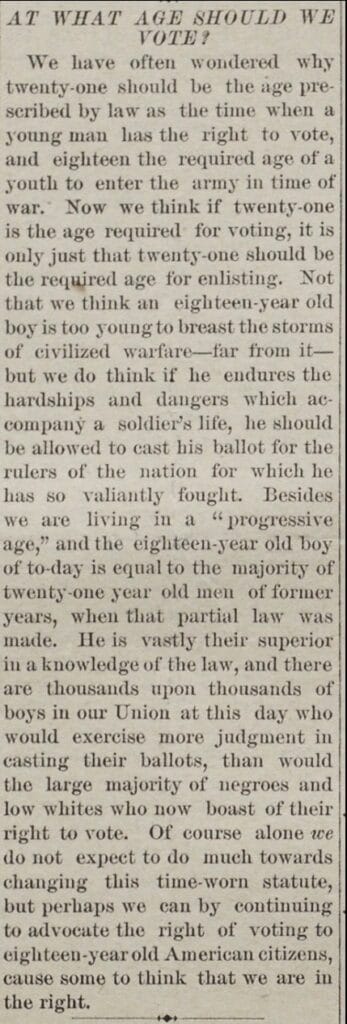
Here the journalist really challenges the idea that men between the ages of 18 and 21 were too immature to responsibly “cast his ballot for the rulers of the nation”. This piece aligns with several of its contemporaries which emphasise the emotional intelligence and capacity of young people.
Admittedly, these particular examples do conform to normalised perceptions about what journalism is, in that they focus on big political issues. However, it’s important to note that besides its uniquely young authors, what makes Amateur Journalism exceptional is its relatively small scale. There are over 3000 publication titles represented in the Amateur Newspapers archive, but despite some attempts at expansion, they never came to dominate the journalism field by becoming a key part of mainstream media.
Resistance: Journalism from Indigenous Communities
As well as addressing the roots of youth journalism, it was very fascinating to examine the contributions of minority-ethnic journalists. I primarily focused on the Nineteenth Century U.S Newspapers archive for this aspect of my research. This archive contained two publications that were of particular interest: the Cherokee Advocate and the Cherokee Phoenix. These were two of the first tribal newspapers to be established and to be written in both English and Cherokee. These publications were used partly to highlight ‘features, accounts…and social and religious activities’ taking place in Oklahoma and Georgia (formally Cherokee Nation). But they also served as tools for political protest and collective representation for their ethnic group.
The Indian Removal Act 1830
As you can see in the image below, of all the topics mentioned in the Cherokee Advocate and the Cherokee Phoenix, the themes of ‘Citizenship’ and ‘Legislative Bills’ were discussed very frequently.
These legislative bills included the Indian Removal Act of 1830, an Indigenous relocation policy implemented by President Andrew Jackson. Cherokee resistance to this Act was especially strong and is aptly demonstrated by this article taken from the Cherokee Phoenix immediately after the Removal Act was passed.
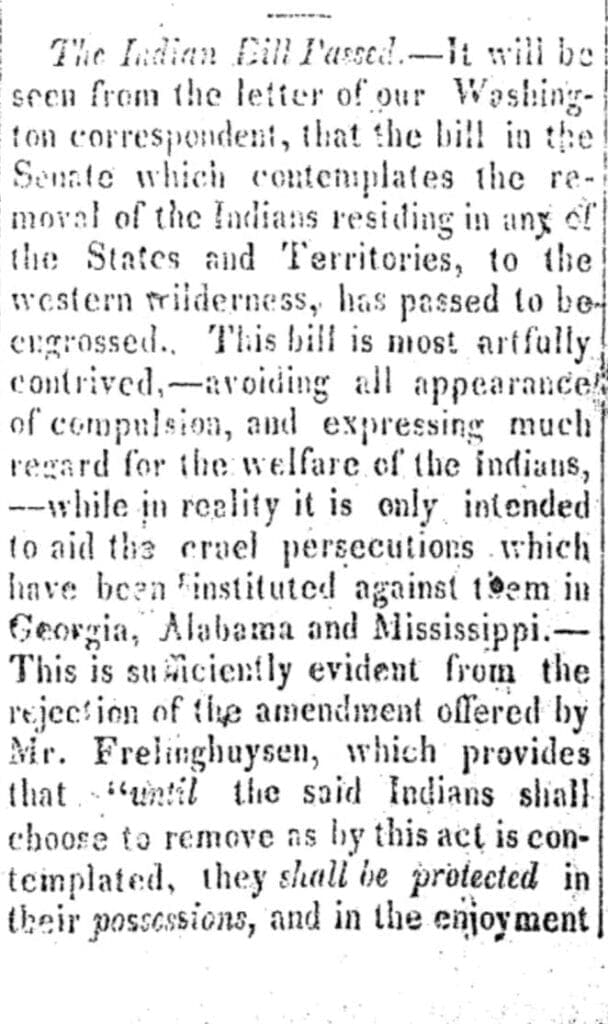
Here the author expresses a clearly oppositional stance to the policy- describing it as a continuation of “cruel persecutions” against the “Indians”. They also emphasise the forceful and imposing nature of the Act which denied the Cherokee Nation the right to remain under protection until they chose “to remove”. Though it is unclear whether this author was Cherokee, if they were not, it is worth noting their passionate tone and evident dedication to this cause, especially in spite of its controversial and divisive nature. That Cherokee Advocate and the Cherokee Phoenix were even established challenges ideas not just about who can do journalism, but also undermines ideas of Indigenous passivity. The use of these tribe-based newspapers as mouthpieces for resistance, is a great example of Indigenous agency in history and helps to create a more representative idea of Cherokee engagement with politics and their contribution to journalism.
Looking at these examples of non-traditional nineteenth century publications, it becomes clear that journalism has historically taken many forms and has been used effectively by underrepresented groups as a method of elevation. Whether or not these voices that had been disenfranchised and ignored on the basis of age or race were elevated, these small-scale newspapers were clearly powerful platforms for intellectual discussions and political resistance.
Related blogs
If you enjoyed reading about marginalised voices in journalism, check out these posts:
- Using Gale Historical Newspapers to Explore the Representation of Coastal Wreckers
- Using Literary Sources to Research Late Nineteenth-Century British Feminism
- Peyote rights, Religious Freedom and Indigenous Persecution in the Women’s Missionary Advocate Papers


